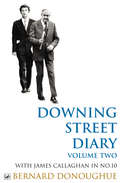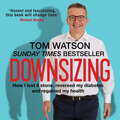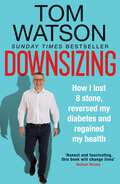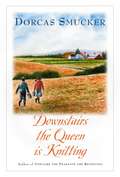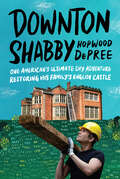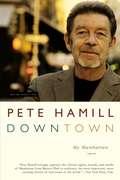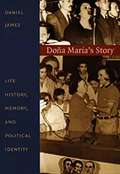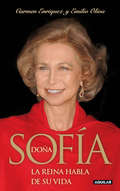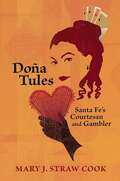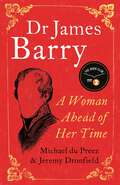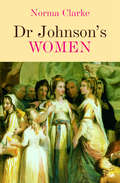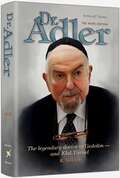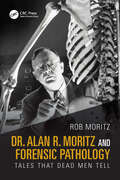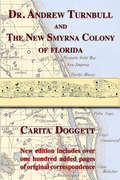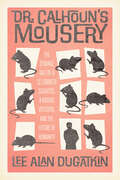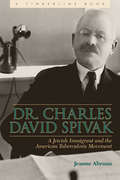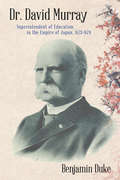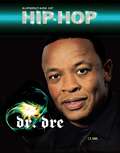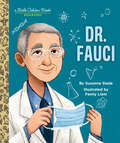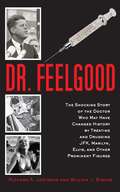- Table View
- List View
Downing Street Diary Volume Two: With James Callaghan in No. 10
by Bernard DonoughueThe first volume of Bernard Donoughue's Downing Street Diary was described by Charles Moore in the Daily Telegraph as 'the best account of Harold Wlson's last days'; 'the sheer scale and detail are fascinating' wrote Peter Riddell in the Times Literary Supplement. This second volume covers the three years, 1976-79, when Donoughue was Senior Policy Advisor to James Callaghan.At first Callaghan quickly established dominance over his cabinet and restored calm after the plots and scandals of the later Wilson years. His incomes policy reduced inflation and, in the teeth of opposition from the left wing, he negotiated the notorious IMF loan at the expense of eliminating some of Labour's most cherished dreams. By 1978, Callaghan, a politician of great patriotism and decency, seemed to have succeeded in steering Britain into calmer waters. But then the storm broke. Trade union militants brushed aside their mediocre leaders and launched a ferocious attack on Callaghan's pay policy, driving up inflation and demonstrating the government's impotence. In the diaries we see the prime minister and the government paralysed as the 'Winter of Discontent' began to bite and politics took to the streets.As Labour drifted to inevitable defeat in the 1979 election we see Callaghan fighting honourably. From the smoke of battle there emerges a striking new leader: Margaret Thatcher. The diaries describe vividly both the decline and final collapse of 'old' Labour and how Mrs Thatcher took the opportunity to launch her crusade to dismantle trade union power and much of the British public sector.Besides James Callaghan the chief figures in this volume of Lord Donoughue's diaries are Roy Jenkins, Denis Healey, Tony Crosland, Michael Foot, Shirley Williams, David Owen and Tony Benn.
Downsizing: How I lost 8 stone, reversed my diabetes and regained my health – THE SUNDAY TIMES BESTSELLER
by Tom Watson'An honest and fascinating account of the journey that Tom made from discovering he was a type 2 diabetic to doing something about it. This book will change lives.' Michael Mosley'Two years ago I turned 50, weighed 22 stone and was heavily medicated for type 2 diabetes. I thought it would be all downhill from there. By radically changing my nutrition, cutting out sugar, and taking up exercise, I've changed my life and reversed my diabetes. I hope my story will inspire others to regain their health and happiness and discover the new lease of life I'm experiencing.'Tom Watson began to put on weight in his early twenties, having developed an appetite for fast food and cheap beer while studying at the University of Hull. As time progressed - and his penchant for anything sweet, fatty or fizzy persisted - he found himself adjusting his belt, loosening his collar and upsizing his wardrobe to XXL. He continued to pile on the pounds when he entered the world of politics as MP for West Bromwich East (despite short-lived flirtations with fad diets and fitness classes). By December 2014, his bathroom scales had tipped to 22 stone. After being diagnosed with type 2 diabetes in late 2015, he decided to take control of his diet and exercise. He started to feel better quickly and within a short time his long-term blood sugar levels were within normal range. By July 2018, he came off medication.(p) 2020 Octopus Publishing Group
Downsizing: How I lost 8 stone, reversed my diabetes and regained my health – THE SUNDAY TIMES BESTSELLER
by Tom WatsonTHE SUNDAY TIMES BESTSELLER'An honest and fascinating account of the journey that Tom made from discovering he was a type 2 diabetic to doing something about it. This book will change lives.' Michael Mosley'enjoyable for stories of Watson's high stress/high booze/poor sleep/comfort eating political life' The Times'Two years ago I turned 50, weighed 22 stone and was heavily medicated for type 2 diabetes. I thought it would be all downhill from there. By radically changing my nutrition, cutting out sugar, and taking up exercise, I've changed my life and reversed my diabetes. I hope my story will inspire others to regain their health and happiness and discover the new lease of life I'm experiencing.'Tom Watson began to put on weight in his early twenties, having developed an appetite for fast food and cheap beer while studying at the University of Hull. As time progressed - and his penchant for anything sweet, fatty or fizzy persisted - he found himself adjusting his belt, loosening his collar and upsizing his wardrobe to XXL. He continued to pile on the pounds when he entered the world of politics as MP for West Bromwich East (despite short-lived flirtations with fad diets and fitness classes). By December 2014, his bathroom scales had tipped to 22 stone. After being diagnosed with type 2 diabetes in late 2015, he decided to take control of his diet and exercise. He started to feel better quickly and within a short time his long-term blood sugar levels were within normal range. By July 2018, he came off medication.
Downsizing: How I lost 8 stone, reversed my diabetes and regained my health – THE SUNDAY TIMES BESTSELLER
by Tom WatsonTHE SUNDAY TIMES BESTSELLER'An honest and fascinating account of the journey that Tom made from discovering he was a type 2 diabetic to doing something about it. This book will change lives.' Michael Mosley'enjoyable for stories of Watson's high stress/high booze/poor sleep/comfort eating political life' The Times'Two years ago I turned 50, weighed 22 stone and was heavily medicated for type 2 diabetes. I thought it would be all downhill from there. By radically changing my nutrition, cutting out sugar, and taking up exercise, I've changed my life and reversed my diabetes. I hope my story will inspire others to regain their health and happiness and discover the new lease of life I'm experiencing.'Tom Watson began to put on weight in his early twenties, having developed an appetite for fast food and cheap beer while studying at the University of Hull. As time progressed - and his penchant for anything sweet, fatty or fizzy persisted - he found himself adjusting his belt, loosening his collar and upsizing his wardrobe to XXL. He continued to pile on the pounds when he entered the world of politics as MP for West Bromwich East (despite short-lived flirtations with fad diets and fitness classes). By December 2014, his bathroom scales had tipped to 22 stone. After being diagnosed with type 2 diabetes in late 2015, he decided to take control of his diet and exercise. He started to feel better quickly and within a short time his long-term blood sugar levels were within normal range. By July 2018, he came off medication.
Downstairs the Queen is Knitting
by Dorcas SmuckerDownstairs the Queen Is Knitting is Dorcas Smucker's brand new chronicle of family life with six fast-growing up kids. Downstairs the Queen Is Knitting follows Dorcas' two earlier and beloved collections, "Upstairs the Peasants Are Revolting" and "Ordinary Days." The kids are a bit older now, and Dorcas and Paul's marriage is longer and deeper. But Dorcas sees with more disarming clarity than ever, and she writes piercingly about life on and off the grass farm as the kids move toward more independence. Downstairs the Queen Is Knitting will entertain you, and ultimately it will soothe your soul.
Downton Shabby: One American's Ultimate DIY Adventure Restoring His Family's English Castle
by Hopwood DePreeHGTV meets Downton Abbey! A ready-for-TV story—with charm and humor in abundance—about a Los Angeles producer who moves to England to save his ancestral castle from ruin.“A true delight...In this marvelous debut, film producer DePree leaves the Hollywood hills to resurrect his British ancestral home, a 50,000-square-foot estate in the English countryside. Readers are in for a treat."--Publishers Weekly (starred review)Hollywood producer Hopwood DePree had been told as a boy that an ancestor—who he was named for—had left his family’s English castle in the 1700s to come to America. One night after some wine and a visit to Ancestry.com, Hopwood discovered a photograph of a magnificent English estate with a familiar name: Hopwood Hall, a 60-room, 600-year-old grand manor on 5,000 acres. And with that, Hopwood DePree’s life took an almost fairytale turn.Hopwood Hall, in northwest England, was indeed his family’s ancestral home. It had been occupied continuously by the Hopwood family for five centuries until the last remaining male heirs were killed in World War I. Since then, the Hall had fallen gradually into disrepair and was close to collapse. When Hopwood visited, he discovered trees growing in the chimneys, holes in the roof, and water sluicing down walls. It would take many millions to save the Hall—millions that Hopwood certainly didn’t have—but despite the fact that he lived in Los Angeles and had no construction skills, Hopwood DePree came to a conclusion: He would save Hopwood Hall.Downton Shabby—the name Hopwood coined for the glorious ruin—traces Hopwood DePree’s adventures as he gives up his life in Hollywood and moves permanently to England to save Hopwood Hall from ruin. But the task is far too big for one person, of course. Hopwood discovers that the Hall comes with an unforgettable cast of new neighbors he can call on for help—from the electrician whose mum had fond memories of working at the Hall to gruff caretaker Bob, and the local aristocrats who (sort of) come to accept Hopwood as one of their own. Together, as they navigate the trials and triumphs of trying to save an actual castle, Hopwood finds himself ever further from the security of his old life, but comes to realize that, actually, he’s never been closer to home.
Downtown: My Manhattan
by Pete HamillA rich historical and personal portrait of Manhattan from the bestselling writer who is for many the living embodiment of the city.Manhattan, the keystone of New York City, is a place of ghosts and buried memory. One can still see remnants of the British colony, the mansions of the robber barons, and the speakeasies of the 1920s. These are the places that have captivated the imaginations of writers for centuries. Now Pete Hamill brings his unique knowledge and deep love of the city to a New York chronicle like no other.During his 40 years as a newspaperman, Pete Hamill has been getting to know Manhattans neighborhoods and inhabitants intimately, bearing witness to their greatest triumphs and tragedies. From the winding, bohemian streets of Greenwich Village to the seedy alleyways of the meatpacking district and to the weathered cobblestones of South Street Seaport, Hamill peels back the layers of history to reveal the citys past, present, and future.More than just history or reporting, this is an elegy by a native son who has lived through some of New Yorks most historic moments, and who continues to call this magnificent, haunted city his home.
Doña María's Story: Life History, Memory, And Political Identity (Latin America Otherwise Series)
by Daniel James Irene Silverblatt Walter D. Mignolo Sonia Saldívar-HullIn this remarkable book historian Daniel James presents the gripping, poignant life-story of Doña María Roldán, a woman who lived and worked for six decades in the meatpacking community of Berisso, Argentina. A union activist and fervent supporter of Juan and Eva Perón, Doña María’s evocative testimony prompts James to analyze the promise and problematic nature of using oral sources for historical research. The book thus becomes both fascinating narrative and methodological inquiry. Doña María’s testimony is grounded in both the local context (based on the author’s thirteen years of historical and ethnographic research in Berisso) and a broader national narrative. In this way, it differs from the dominant genre of women’s testimonial literature, and much recent ethnographic work in Latin America, which have often neglected historical and communal contextualization in order to celebrate individual agency and self-construction. James examines in particular the ways that gender influences Doña María’s representation of her story. He is careful to acknowledge that oral history challenges the historian to sort through complicated sets of motivations and desires—the historian’s own wish to uncover “the truth” of an informant’s life and the interviewee’s hope to make sense of her or his past and encode it with myths of the self. This work is thus James’s effort to present his research and his relationship with Doña María with both theoretical sophistication and recognition of their mutual affection. While written by a historian, Doña María’s Story also engages with concerns drawn from such disciplines as anthropology, cultural studies, and literary criticism. It will be especially appreciated by those involved in oral, Latin American, and working-class history.
Doña Sofía: La Reina habla de su vida
by Emilio Oliva Carmen EnríquezDoña Sofía ha contestado sobre su pensamiento vital, sus inquietudes y preocupaciones. La Reina hace de guía del recorrido por su vida que realizan los periodistas Carmen Enríquez y Emilio Oliva. Durante dos largas sesiones, celebradas en el Palacio de la Zarzuela, Doña Sofía ha contestado a más de un centenar de preguntas que los autores le han formulado sobre su pasado, su presente y su forma de afrontar el futuro, sobre su pensamiento vital, sus inquietudes y preocupaciones, así como también acerca de sus gustos y aficiones personales. La Reina no ha rechazado ninguna de las cuestiones planteadas por los dos periodistas y ha abordado asuntos de tanta importancia como sus relaciones con la princesa Letizia, la separación de la infanta Elena, su relación con los medios de comunicación, el futuro de la monarquía en España o su postura ante problemas globales como la pobreza o el terrorismo. Los autores, que han seguido a Doña Sofía durante muchos años en el ejercicio de su trabajo como corresponsales ante la Casa Real, han hablado también con una veintena de personas directamente relacionadas con la Reina para completar un elaborado perfil biográfico que nos acerca a la personalidad de quien ha acompañado en todo momento al rey Juan Carlos en una etapa decisiva de la Historia de España.
Doña Tules: Santa Fe's Courtesan and Gambler
by Mary J. Straw CookGertrudis Barceló was born at the turn of the nineteenth century in the Bavispe valley of east central Sonora, Mexico. Young Gertrudis, who would later achieve fame under the name &“Tules,&” discovered how to manipulate men, reading their body language and analyzing their gambling habits. This power, coupled with a strong-willed and enterprising nature, led Doña Tules to her legendary role as a shrewd and notorious gambling queen and astute businesswoman. Throughout the 1830s and 1840s, her monte dealings and entertainment houses became legendary throughout the southern Rocky Mountain region.Doña Tules&’s daring behavior attracted the condemnation of many puritanical Anglo travelers along the Santa Fe Trail. Demonized by later historians, Doña Tules has predominately been portrayed as little more than a caricature of an Old West madam and cardsharp, eluding serious historical study until now. Mary J. Straw Cook sifts through the notoriety to illustrate the significant role Doña Tules played in New Mexico history as the American era was about to begin.
Dr James Barry: A Woman Ahead of Her Time
by Jeremy Dronfield Michael Du PreezDr James Barry was many things in his life: Inspector General of Hospitals, army surgeon, duellist, reformer, ladykiller, eccentric. He performed the first successful Caesarean in the British Empire, outraged the military establishment, and gave Florence Nightingale a dressing down at Scutari. At home he was surrounded by a menagerie of animals, including a cat, a goat, a parrot and a terrier. But most astonishingly, long ago in Cork, Ireland, he had been a young girl and a mother. Drawing on a decade of research in archives all over the world, including the unearthing of previously unknown material, Michael du Preez and Jeremy Dronfield tell the amazing true story of Margaret Anne Bulkley, the young woman who broke the rules of Georgian society to become one of the most respected and controversial army surgeons of the century. In an extraordinary life, she crossed paths with the British Empire’s great and good, royalty and rebels, soldiers and slaves. A medical pioneer, she rose to a position that no woman before her had been allowed to occupy. However, for all her successes, her long, audacious deception also left her isolated, even costing her the chance to be with the man she loved.
Dr Johnson's Women
by Norma ClarkeDr Johnson's friendships with the leading women writers of the day was an important feature of his life and theirs. He was willing to treat women as intellectual equals and to promote their careers: something ignored by his main biographer, James Boswell. Dr Johnson's Women investigates the lives and writings of six leading female authors Johnson knew well: Elizabeth Carter, Charlotte Lennox, Elizabeth Montagu, Hester Thrale, Hannah More and Fanny Burney. It explores their relationships with Johnson, with each other and with the world of letters. It shows what it was like to be a woman writer in the 'Age of Johnson'. It is often assumed that women writers in the eighteenth century suffered the same restrictions and obstacles that confronted their Victorian successors. Norma Clarke shows that this was by no means the case. Highlighting the opportunities available to women of talent in the eighteenth century, Dr Johnson's Women makes clear just how impressive and varied their achievements were.
Dr. Adler
by Dr AdlerThey don't make them like this anymore. Rav Schach zt'l called him "ze'ir a groisseh doctor" (a very great doctor), and the Klausenberger zt'l declared, "he was accompanied by the angel Rafael himself." Blessed by the Gerrer Rebbe, the Imrei Emes, to be "
Dr. Alan R. Moritz and Forensic Pathology: Tales That Dead Men Tell
by Rob MoritzForensic science has become a mainstay of popular culture on television, in movies, books, and podcasts. Dr. Alan R. Moritz (1899-1986) was a highly influential figure in the development of the field of forensic science as we know it today.Dr. Alan R. Moritz and Forensic Pathology: Tales that Dead Men Tell, written by Dr. Moritz’s journalist grandson Rob Moritz, recounts his life and career from personal papers and correspondence, interviews, newspaper accounts and other sources, including archived materials from Harvard Medical School, the Rockefeller Foundation, Case Western Reserve University and the University Hospitals of Cleveland. Chapters chronicle more than a half-century of ground-breaking research and high-profile investigations, including some of the 20th century’s most infamous cases. This includes the assassination of President John F. Kennedy, the Sam Shepherd case, the Cocoanut Grove nightclub fire, the Attica prison riots and the Texas Tower sniper, as well as his contributions to the well-known Nutshell Studies of Unexplained Death. Dr. Moritz, the inspiration for the first on-screen forensic scientist, is credited with being one of the most prominent pioneers of the last century, helping to move forensic medicine from the political jurisdiction of untrained local coroners to a respected scientific discipline that fascinates the public.The book also details Dr. Moritz’s travels, during which he experienced some of society’s darkest chapters. This includes an infamous lynching during the “Red Summer” of 1919, the rise of Nazi Germany and the degradation of apartheid in South Africa, all of which influenced and shaped his worldview. Highlights of Dr. Moritz’s work, recounted in detail, include career stops at Case Western Reserve University in Cleveland and Harvard Medical School in Boston. Coverage details his most salient and well-known research—as well as insightful anecdotes and stories that demonstrate Dr. Moritz’s character and the development and evolution of his scientific views over the years.This book: Profiles the life of a well-known and impactful figure in the advancement of forensic pathology’s public perception and practices in the United States. Provides background on Dr. Moritz’s seminal work, the article Classical Mistakes in Forensic Pathology Is of interest to medical practitioners, history of science buffs, and forensic practitioners interested in the early history and development of forensic pathology as a discipline Dr. Alan R. Moritz and Forensic Pathology fills in a missing chapter on the life, research, and lasting legacy of Dr. Moritz, providing insight into the development of modern forensic pathology practice by examining the momentous contributions and character of one of its true pioneers.
Dr. Andrew Turnbull and The New Smyrna Colony of Florida
by Carita DoggettWhen East Florida was ceded to England by Spain in 1763, Scottish physician, Dr. Andrew Turnbull, recruited over 1,400 Mediterranean colonists to establish the agricultural colony he named "Smyrnéa." Carita Doggett recounts that not only did the growing conditions prove less than ideal but how seemingly every imaginable calamity befell the colony before it failed in 1777. his edition of Dr. Andrew Turnbull and The New Smyrna Colony of Florida includes dozens of letters between Andrew Turnbull and others involved with his Smyrnéa venture. These documents, not available to Carita Doggett, were discovered in the tower of Ballindalloch Castle in Scotland where they had been archived for centuries. This diary-like correspondence brings to life the dreams, efforts, and trials of Andrew Turnbull and the Smyrna colonists.
Dr. Babasaheb Ambedkar Gauravgranth: डॉ. बाबासाहेब आंबेडकर गौरवग्रंथ
by Daya Pawarक्रियाशील नेता थोर विचारवंत, भारतीय घटनेचे शिल्पकार आणि दलित साहित्याचा प्रेरणास्त्रोत असे ज्यांचे वर्णन केले ते भारतरत्न डॉ. बाबासाहेब आंबेडकर हे भारत मातेचे थोर सुपुत्र होते. त्यांच्या जन्मशताब्दीच्या निमित्ताने त्यांना कृतिशील अभिवादन करावे म्हणून महाराष्ट्र राज्य साहित्य संस्कृती मंडळाने एक गौरवग्रंथ प्रसिद्ध करण्याचे ठरविले आणि त्यानुसार हा ग्रंथ प्रसिद्ध झाला. ह्या गौरवग्रंथात डॉ. बाबासाहेब आंबेडकर यांच्या उत्तुंग व्यक्तिमत्त्वाचा सर्वांगीण परिचय घडावा म्हणून, महाराष्ट्रातील आणि बाहेरीलसुद्धा अनेक अभ्यासकांनी विनंतीला प्रतिसाद दिला. डॉ. बाबासाहेब आंबेडकरांचा सामाजिक विचार, आर्थिक विचार, धार्मिक चिंतन आणि वाङ्मयीन विचार ह्यावरील वैशिष्ट्यपूर्ण लेख तर येथे आहेतच; पण त्याखेरीज बाबासाहेबांची लेखनशैली, विनोद, पत्रकारिता, दलित साहित्याचे प्रेरणास्त्रोत ह्यासुध्दा विषयांवर लेखन समाविष्ट केले आहे. राखीव जागेचा प्रश्न, स्वातंत्र्यपूर्वकाळातील दलित चळवळ, कामगार विषयक धोरण, स्वतंत्र मजूर पक्ष, शे. का. फेडरेशन, बाबासाहेबांचे समकालीन, बाबासाहेबांचे शेतीविषयक विचार, इत्यादी विविध विषयांवरील लेखनाने, डॉ. बाबासाहेब आंबेडकरांचे जीवन, कार्य आणि तत्त्वज्ञानावर, नव्याने शोध घेण्याचे प्रयत्न येथे शब्दबद्ध केले आहेत.
Dr. Benjamin Rush: The Founding Father Who Healed a Wounded Nation
by Harlow Giles UngerA gripping, often startling biography of the Founding Father of an America that other Founding Fathers forgot--an America of women, African Americans, Jews, Roman Catholics, Quakers, indentured workers, the poor, the mentally ill, and war veteransNinety percent of Americans could not vote and did not enjoy rights to life, liberty, or the pursuit of happiness when our Founding Fathers proclaimed, "all men are created equal." Alone among those who signed the Declaration of Independence, Benjamin Rush heard the cries of those other, deprived Americans and stepped forth as the nation's first great humanitarian and social reformer.Remembered primarily as America's leading, most influential physician, Rush led the Founding Fathers in calling for abolition of slavery, equal rights for women, improved medical care for injured troops, free health care for the poor, slum clearance, citywide sanitation, an end to child labor, free universal public education, humane treatment and therapy for the mentally ill, prison reform, and an end to capital punishment. Using archival material from Edinburgh, London, Paris, and Philadelphia, as well as significant new materials from Rush's descendants and historical societies, Harlow Giles Unger's new biography restores Benjamin Rush to his rightful place in American history as the Founding Father of modern American medical care and psychiatry.
Dr. Calhoun's Mousery: The Strange Tale of a Celebrated Scientist, a Rodent Dystopia, and the Future of Humanity
by Lee Alan Dugatkin“Brilliant. . . . An absorbing read and a potent lesson in moral behavior—both of rodents and of humans.”—Deborah Blum, Pulitzer Prize–winning author of The Poison Squad • “A fascinating read about an immensely influential scientist.”—Robert M. Sapolsky, author of the New York Times–bestseller Determined • “Stimulating scientific history. . . . Colorful accounts. . . . This fascinates.”—Publishers Weekly A bizarre and compelling biography of a scientist and his work, using rodent cities to question the potential catastrophes of human overpopulation. It was the strangest of experiments. What began as a utopian environment, where mice had sumptuous accommodations, had all the food and water they could want, and were free from disease and predators, turned into a mouse hell. Science writer and animal behaviorist Lee Alan Dugatkin introduces readers to the peculiar work of rodent researcher John Bumpass Calhoun. In this enthralling tale, Dugatkin shows how an ecologist-turned-psychologist-turned-futurist became a science rock star embedded in the culture of the 1960s and 1970s. As interest grew in his rodent cities, Calhoun was courted by city planners and his work was reflected in everything from Tom Wolfe’s hard-hitting writing to the children’s book Mrs. Frisby and the Rats of NIMH. He was invited to meetings with the Royal Society and the pope and taken seriously when he proposed a worldwide cybernetic brain—a decade before others made the internet a reality. Readers see how Calhoun’s experiments—rodent apartment complexes like “Mouse Universe 25”—led to his concept of “behavioral sinks” with real effects on public policy discussions. Overpopulation in Calhoun’s mouse (and rat) complexes led to the loss of sex drive, the absence of maternal care, and a class of automatons that included “the beautiful ones,” who spent their time grooming themselves while shunning socialization. Calhoun—and those who followed his work—saw the collapse of this mouse population as a harbinger of the ill effects of an overpopulated human world. Drawing on previously unpublished archival research and interviews with Calhoun’s family and former colleagues, Dugatkin offers a riveting account of an intriguing scientific figure. Considering Dr. Calhoun’s experiments, he explores the changing nature of scientific research and delves into what the study of animal behavior can teach us about ourselves.
Dr. Charles David Spivak: A Jewish Immigrant and the American Tuberculosis Movement (Timberline Books)
by Jeanne AbramsPart biography, part medical history, and part study of Jewish life in turn-of-the-century America, Jeanne Abrams's book tells the story of Dr. Charles David Spivak - a Jewish immigrant from Russia who became one of the leaders of the American Tuberculosis Movement. Born in Russia in 1861, Spivak immigrated to the United States in 1882 and received his medical degree from Philadelphia's Jefferson Medical College by 1890. In 1896, his wife's poor health brought them to Colorado. Determined to find a cure, Spivak became one of the most charismatic and well-known leaders in the American Tuberculosis Movement. His role as director of Denver's Jewish Consumptives' Relief Society sanatorium allowed his personal philosophies to strongly influence policies. His unique blend of Yiddishkeit, socialism, and secularism - along with his belief in treating the "whole" patient - became a model for integrating medical, social, and rehabilitation services that was copied across the country. Not only a national leader in the crusade against tuberculosis but also a luminary in the American Jewish community, Dr. Charles Spivak was a physician, humanitarian, writer, linguist, journalist, administrator, social worker, ethnic broker, and medical, public health, and social crusader. Abrams's biography will be a welcome addition to anyone interested in the history of medicine, Jewish life in America, or Colorado history.
Dr. David Murray: Superintendent of Education in the Empire of Japan, 1873-1879
by Benjamin DukeThis is the first biography in English of an uncommon American, Dr. David Murray, a professor of mathematics at Rutgers College, who was appointed by the Japanese government as Superintendent of Education in the Empire of Japan in 1873. The founding of the Gakusei—the first public school system launched in Japan—marks the beginning of modern education in Japan, accommodating all children of elementary school age. Murray’s unwavering commitment to its success renders him an educational pioneer in Japan in the modern world. Benjamin Duke has compiled this comprehensive biography of David Murray to showcase Murray’s work, both in assisting around 100 samurai students in their studies at Rutgers, and in his unprecedented role in early Japanese-American relations. This fascinating story uncovers a little-known link between Rutgers University and Japan, and it is the only book to conclude that Rutgers made a greater contribution to the development of modern education in the early Meiji Era than any other non-Japanese college or university in the world.
Dr. Diwan Singh Kalepani
by N. Iqbal SinghBiography of Diwana Singha Kale Pani, 1897-1944, Panjabi writer.
Dr. Dre (Superstars of Hip-Hop)
by C. F. EarlFrom his time in the group NWA to his work with Eminem, Dr. Dre has been a major part of hip-hop's history. The rapper/producer has been able to make hit music for years. Today, he's also moving into business with Beats by Dre. It seems there's nothing that Dre can't do! Dr. Dre tells the story of one of hip-hop's most important artists and producers. Read about Dre's role in starting Death Row Records and Aftermath Entertainment. Learn about what Dre has been through to reach his goals, and how he's survived tough times.
Dr. Fauci: A Little Golden Book Biography (Little Golden Book)
by Suzanne SladeHelp your little one dream big with a Little Golden Book biography about Dr. Anthony Fauci! The perfect introduction to nonfiction for preschoolers!This Little Golden Book about Dr. Fauci--the chief medical advisor to many US presidents and America's doctor during the Covid-19 pandemic--is an inspiring read-aloud for young children.Look for Little Golden Book biographies about these other inspiring people:• Joe Biden• Kamala Harris• Queen Elizabeth II • Barack Obama• Ruth Bader Ginsburg• Sonia Sotomayor• Martin Luther King Jr.• George Washington• Abraham Lincoln
Dr. Feelgood: The Shocking Story of the Doctor Who May Have Changed History by Treating and Drugging JFK, Marilyn, Elvis, and Other Prominent Figures
by William J. Birnes Richard A. LertzmanDoctor Max Jacobson, whom the Secret Service under President John F. Kennedy code-named “Dr. Feelgood,” developed a unique “energy formula” that altered the paths of some of the twentieth century’s most iconic figures, including President and Jackie Kennedy, Marilyn Monroe, Frank Sinatra, and Elvis. JFK received his first injection (a special mix of “vitamins and hormones,” according to Jacobson) just before his first debate with Vice President Richard Nixon. The shot into JFK’s throat not only cured his laryngitis, but also diminished the pain in his back, allowed him to stand up straighter, and invigorated the tired candidate. Kennedy demolished Nixon in that first debate and turned a tide of skepticism about Kennedy into an audience that appreciated his energy and crispness. What JFK didn’t know then was that the injections were actually powerful doses of a combination of highly addictive liquid methamphetamine and steroids.Author and researcher Rick Lertzman and New York Times bestselling author Bill Birnes reveal heretofore unpublished material about the mysterious Dr. Feelgood. Through well-researched prose and interviews with celebrities including George Clooney, Jerry Lewis, Yogi Berra, and Sid Caesar, the authors reveal Jacobson’s vast influence on events such as the assassination of JFK, the Cuban Missile Crisis, the Kennedy-Khrushchev Vienna Summit, the murder of Marilyn Monroe, the filming of the C. B. DeMille classic The Ten Commandments, and the work of many of the great artists of that era. Jacobson destroyed the lives of several famous patients in the entertainment industry and accidentally killed his own wife, Nina, with an overdose of his formula.
Dr. Folkman's War
by Robert Cooke C. Everett KoopIn 1961, twenty-eight-year-old Dr. Judah Folkman saw something while doing medical research in a United States navy lab that gave him the first glimmering of a wild, inspired hunch. What if cancerous tumors, in order to expand, needed to trigger the growth of new blood vessels to feed themselves? And if that was true, what if a way could be found to stop that growth? Could cancers be starved to death? Dr. Folkman had ample reason to be self confident - second in his class at Harvard Medical School, he was already considered one of the most promising doctors of his generation. But even he never guessed that his idea would eventually grow into a multibillion-dollar industry that is now racing through human trials with drugs that show unparalleled promise of being able to control cancer, as well as other deadly diseases.For the creation of this book, Dr. Judah Folkman cooperated fully and exclusively with acclaimed science writer Robert Cooke. He granted Cooke unlimited interviews, showed him diaries and personal papers, and threw open the doors of his lab. The result is an astonishingly rich and candid chronicle of one of the most significant medical discoveries of our time and of the man whose vision and persistence almost single-handedly has made it possible.Dr. Folkman's radical new way of thinking about cancer was once considered preposterous. So little was known about how cancer spreads and how blood vessels grow that he wasn't even taken seriously enough to be considered a heretic. Other doctors shook their heads at the waste of a great mind, and ambitious young medical researchers were told that accepting a position in Folkman's lab would be the death of their careers. Now, though, the overwhelming majority of experts believes that the day will soon come when antiangiogenesis therapy supplants the current more toxic and less-effective treatments - chemotherapy, radiation, and surgery-as the preferred method of treatment for cancer in patients around the world, and Dr. Folkman's breakthrough will come to be taken for granted the way we now take for granted the polio vaccine and antibiotics.REVIEWSDr. Folkman's War brilliantly describes how high the odds are against success in medical research, how vicious the competition for grants, how entrenched the skepticism about any genuinely original thinking, how polluted by politics and commerce the process of getting medicine into patients' hands. But it also depicts with rare power how exalted a calling medicine can be and how for the rare few-the brilliant, the tireless, and the lucky - the results of success can be world-changing."Judah Folkman's answer-stop cancers by cutting off their blood supplies-has much too long been thought of as too simple to ever work. Now, however, a broad set of antiangiogenic agents based on Judah's ideas are coming on line. The verdict 'cancer' need no longer be synonymous with fear and despair. Our country's 'war against cancer' at last has found its general."-JAMES D. WATSON, winner of the Nobel Prize and author of The Double Helix"It is said that genius disdains the beaten path, and that's certainly true of Dr. Judah Folkman. He has suffered for it, but his imagination, his persistence-and yes, his glorious obsession-will benefit us all. We owe him our boundless gratitude."-JONATHAN HARR, author of A Civil Action"Rarely in the history of modem biomedical research has a major advance been attributable directly to the energies and vision of a single individual. This is such a story, about one man's vision, drive, indeed obsession with an idea that will one day dramatically change cancer therapy."-ROBERT A. WEINBERG, Whitehead Institute for Biomedical Research and MIT, author of One Renegade Cell: How Cancer Begins and Racing to the Beginning of the Road: The Search for the Origin of Cancer"I first encountered Judah Folkman when I was a surgical intern at Boston City Hospital. His already legendary crisp intellect provided a logical scaffold for my understanding of complex diseases. Judah, full of warmth and humanity, inspired me and gen...
